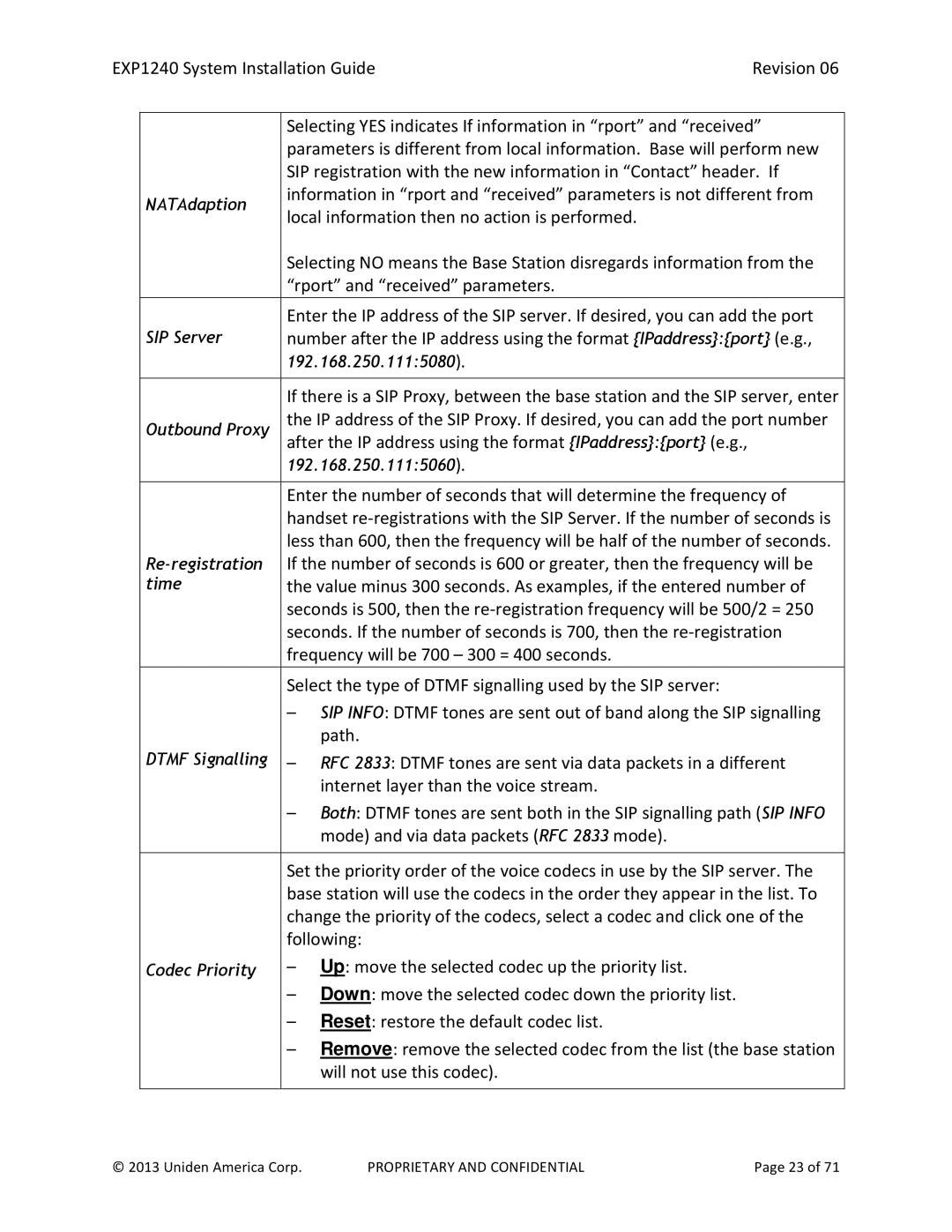
EXP1240 System Installation Guide | Revision 06 | ||
|
|
| |
|
| Selecting YES indicates If information in “rport” and “received” | |
|
| parameters is different from local information. Base will perform new | |
|
| SIP registration with the new information in “Contact” header. If | |
| NATAdaption | information in “rport and “received” parameters is not different from | |
| local information then no action is performed. |
| |
|
|
| |
|
| Selecting NO means the Base Station disregards information from the | |
|
| “rport” and “received” parameters. |
|
|
|
| |
|
| Enter the IP address of the SIP server. If desired, you can add the port | |
| SIP Server | number after the IP address using the format {IPaddress}:{port} (e.g., | |
|
| 192.168.250.111:5080). |
|
|
|
| |
|
| If there is a SIP Proxy, between the base station and the SIP server, enter | |
| Outbound Proxy | the IP address of the SIP Proxy. If desired, you can add the port number | |
|
| after the IP address using the format {IPaddress}:{port} (e.g., |
|
|
| 192.168.250.111:5060). |
|
|
|
| |
|
| Enter the number of seconds that will determine the frequency of | |
|
| handset | |
|
| less than 600, then the frequency will be half of the number of seconds. | |
| If the number of seconds is 600 or greater, then the frequency will be | ||
| time | the value minus 300 seconds. As examples, if the entered number of | |
|
| seconds is 500, then the | |
|
| seconds. If the number of seconds is 700, then the | |
|
| frequency will be 700 – 300 = 400 seconds. |
|
|
|
|
|
|
| Select the type of DTMF signalling used by the SIP server: |
|
|
| – SIP INFO: DTMF tones are sent out of band along the SIP signalling | |
|
| path. |
|
| DTMF Signalling | – RFC 2833: DTMF tones are sent via data packets in a different | |
|
| internet layer than the voice stream. |
|
|
| – Both: DTMF tones are sent both in the SIP signalling path (SIP INFO | |
|
| mode) and via data packets (RFC 2833 mode). |
|
|
|
| |
|
| Set the priority order of the voice codecs in use by the SIP server. The | |
|
| base station will use the codecs in the order they appear in the list. To | |
|
| change the priority of the codecs, select a codec and click one of the | |
|
| following: |
|
| Codec Priority | – Up: move the selected codec up the priority list. |
|
|
| – Down: move the selected codec down the priority list. |
|
|
| – Reset: restore the default codec list. |
|
|
| – Remove: remove the selected codec from the list (the base station | |
|
| will not use this codec). |
|
|
|
|
|
© 2013 Uniden America Corp. | PROPRIETARY AND CONFIDENTIAL | Page 23 of 71 |
